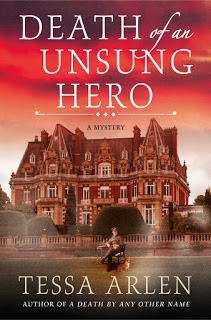Jenn Lyons lives in Atlanta, Georgia with her husband, three cats and a nearly infinite number of opinions on anything from Sumerian mythology to the correct way to make a martini. She is a video game producer by day, and spends her evenings writing epic fantasy. A long-time devotee of

storytelling, she traces her geek roots back to playing first edition Dungeons & Dragons in grade school and reading her way from A to Z in the school’s library.
Her debut epic fantasy novel,
The Ruin of Kings (first in the five-book Godslayer Cycle,) is scheduled for release from Tor Books in Winter, 2019.
One of Lyons's "five favorite books (or series) with wizards, witches, and sorcerers who were not at all squeamish about opening a magical can of ungodly power on their enemies, deities, and the whole world, not necessarily in that order," as shared at Tor.com:
The Black Company by Glen Cook
This take on a mercenary company caught in the crossfire of a rebellion against an evil god-like sorceress was my introduction to grimdark fantasy.  I was blown away by Cook’s descriptions of wizards so powerful they were immortal and all but unkillable, in a world where everyone was interesting but nobody was good. I was equally impressed by the sorcerous women, every bit as terrifying as the men; women who didn’t depend on feminine whiles or seduction (although yes, the Lady is beautiful and in later books there is a romance sub-plot) but preferred to magically annihilate anyone who got in their way. This tale of soldiers desperately trying to hang on to what little humanity they still possess remains one of my all-time favorites.
I was blown away by Cook’s descriptions of wizards so powerful they were immortal and all but unkillable, in a world where everyone was interesting but nobody was good. I was equally impressed by the sorcerous women, every bit as terrifying as the men; women who didn’t depend on feminine whiles or seduction (although yes, the Lady is beautiful and in later books there is a romance sub-plot) but preferred to magically annihilate anyone who got in their way. This tale of soldiers desperately trying to hang on to what little humanity they still possess remains one of my all-time favorites.
Read about
the other entries on the list.
--Marshal Zeringue














































